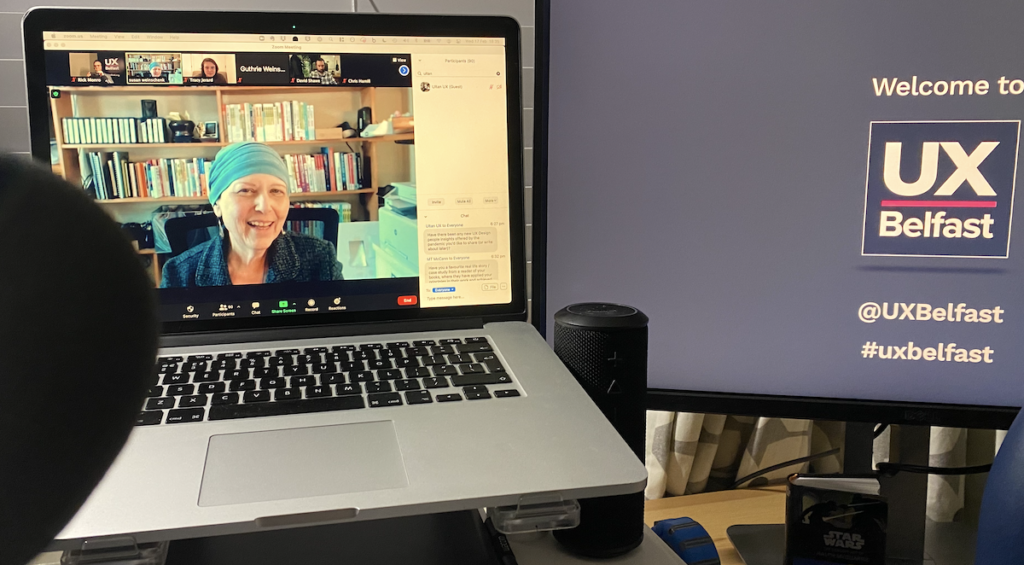In 2007, Dr. Richard Buchanan published a seminal essay reflecting on the ability of design to play a meaningful role in society. In it, he wrote:
“Human-centered design is fundamentally an affirmation of human dignity. It is an ongoing search for what can be done to support and strengthen the dignity of human beings as they act out their lives in varied social, economic, political, and cultural circumstances.”
It may be uncomfortable to admit, but a large part of the design industry has lost sight of the human value of great design. The term ‘UX’ can be an empty acronym used to describe any form of design input. UX design work is all-too-commonly and exclusively associated with funnels and conversions and involves little more than factory-style UI production.
What suffers in these circumstances is a sense of purpose – something emerging as a primary motivator for increasing numbers of professionals.
A McKinsey article from April 2021 reported:
Nearly two-thirds of US-based employees surveyed said that COVID-19 has caused them to reflect on their purpose in life. And nearly half said that they are reconsidering the kind of work they do because of the pandemic. Employees expect their jobs to bring a significant sense of purpose to their lives.
What is our purpose as designers? What should our highest aspiration be? Buchanan posits that designers can directly support human dignity. One of the most basic ways we achieve this is through facilitating the easy completion of (what are often) simple tasks, letting people get on with what they would prefer to be doing with their lives.
Organisations can be shocked to learn that users don’t necessarily want to be using their product or website. They need to in order to get the outcome they require. To quote Levitt, people don’t want a quarter-inch drill, they want a quarter-inch hole.
Making tasks easier to complete is the core of a positive user experience. We commonly refer to this as good usability. But the purpose behind this is respect and support for users’ dignity.
Unconditional positive regard is a term used in psychology to denote the acceptance and support of a person no matter what they say or do. Applied in the world of UX, we might say there is no such thing as user error. Design luminary Don Norman puts it this way:
“What we call ‘human error’ is a human action that … flags a deficit in our technology. It should not be thought of as an error.”
And yet it is technology that so often lets humans down. It often appears that the pursuit of ‘cool’ has overtaken the need to design products and services that meet basic needs. Norman went as far as this in a recent piece for Fast Company:
“New technologies tend to rely on display screens, often with tiny lettering, with touch-sensitive areas that are exceedingly difficult to hit as eye-hand coordination declines. Physical controls are by far the easiest to control–safer too, especially in safety-critical tasks such as driving a car, but they are disappearing. Why? To save a few cents in manufacturing and in a misplaced desire to be trendy.”
The inherent simplicity of touchscreen devices offers a potential lifeline for those left behind or left out of the technological advances of the last 20 years. Poorly designed apps and online services immediately waste that potential.
I have witnessed this first hand, watching as a 90+ yr old came to grips first with a PC and subsequently a tablet. I felt ashamed for the software industry as a whole, as the same person tried to adapt to a new operating system that installed itself, negating all the efforts they had made to master the previous one. Unsurprisingly, they blamed themselves.
I saw the same person struggle with the iPad version of a shopping app, only to have great success with a scaled-up iPhone app on the tablet, making the system more accessible to them.
Universal design, and the philosophy of Design for All (DfA), are bringing these core issues back to the fore. I say ‘back’, because we lost these principles somewhere along the way. We need only glance at Dieter Rams 50-year-old Principles for Good Design to see what has always mattered
The simple goal that people should be able to use what we design with ease, free from stress or friction, is not mutually exclusive from the business objectives of most projects. On the contrary, it will almost certainly support it.
The ability to consider and support human dignity — however you care to define it — should be a foundational quality for any designer. And arguably, a core purpose.
Image: Sigismund von Dobschütz CC BY-SA 3.0, via Wikimedia Commons


